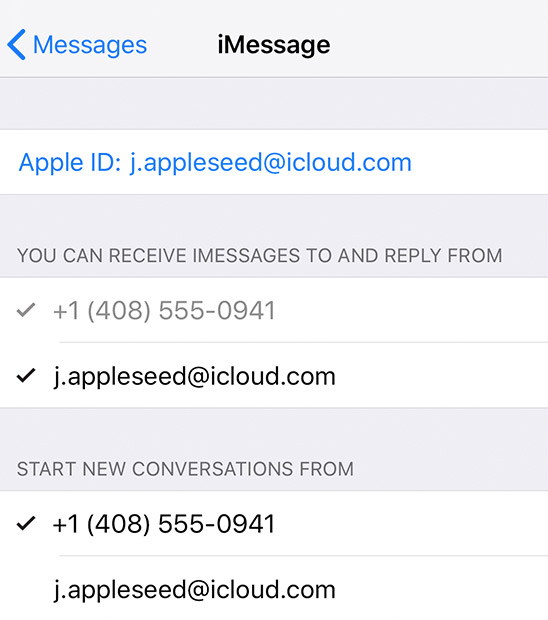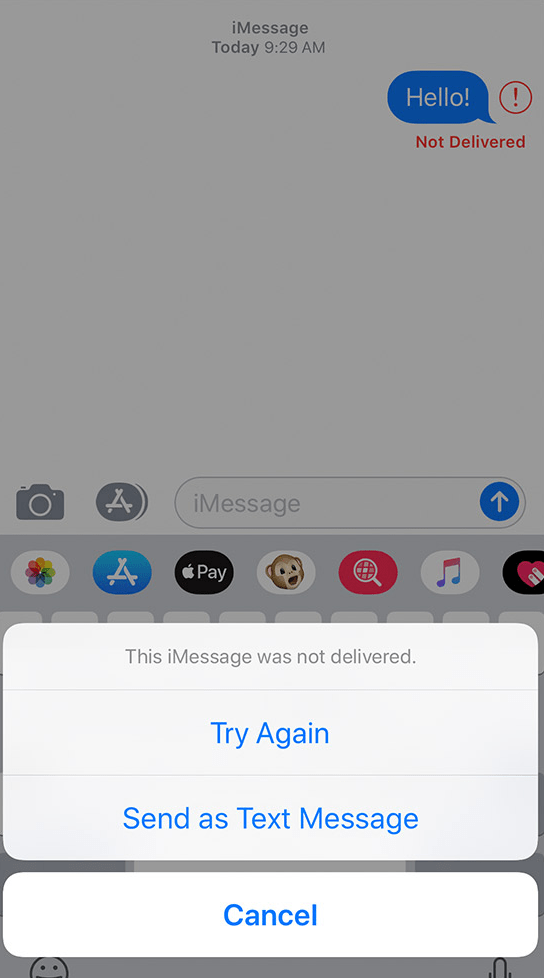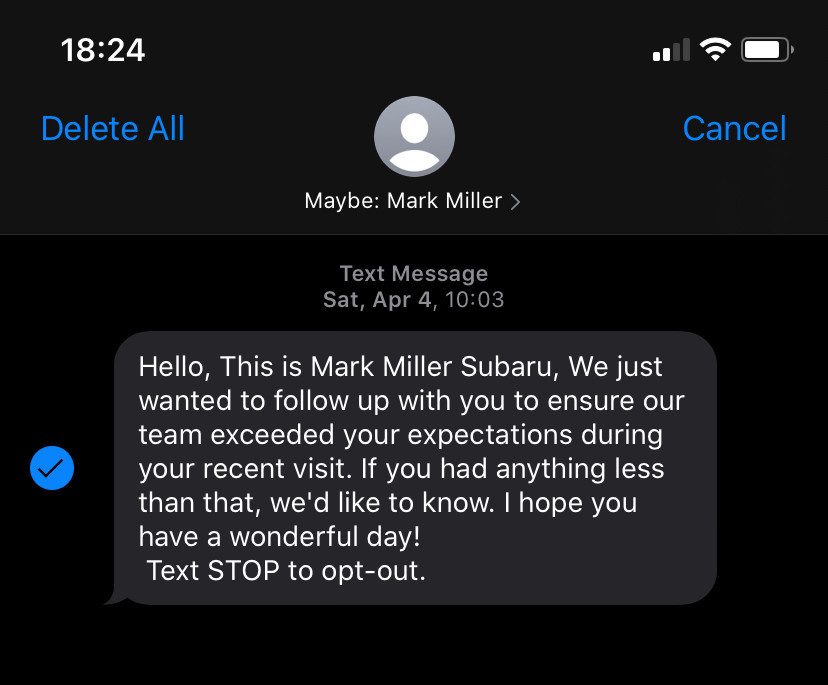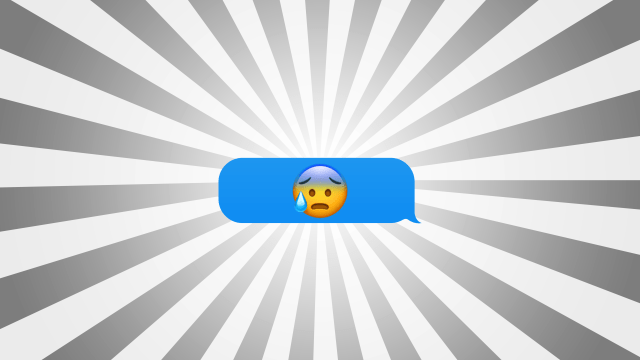iMessage is one of the perks of being inside the Apple universe: The service gets around text messaging fees so you can send messages to other Apple users for free, and it works on Wi-Fi so you can message anywhere you don’t have a cell connection ” on an aeroplane, for example, or when travelling abroad without a data plan ” even as your message history syncs across all your devices logged into iCloud.
Unfortunately, some of iMessage’s quirks don’t always work themselves out on their own, so it’s good to know how to fix some of the more common iMessage issues you might encounter.
For more on messaging, check out the video below:
Of course, you’ll first want to make sure you’re even using iMessage. On your iPhone or iPad, go to Settings > Messages and make sure you’ve enabled iMessage. On your Mac, you simply have to open the Messages app and sign in with your Apple ID (the same one you’re using on your mobile devices).
Once you’ve gotten that far, here’s how to troubleshoot other common iMessage issues.
Messages aren’t syncing between your Mac and iPhone/iPad
Yes, it’s annoying when your messages appear on one device but not another ” this issue makes it hard to keep track of conversations or ensure that you see every new message that you’re sent.
To fix this problem, you need to make sure your contact information (any phone or email address you use with iMessage) is enabled across devices.
On your iOS device(s), head into Settings > Messages > Send & Receive. Here, you should see your phone number and an email address as well as the Apple ID attached to your device. Make sure each contact has a check next to it; if not, tap to toggle on.

Now, open up Messages on your Mac, go to Preferences in the top toolbar and click on the iMessage icon. You should see the same phone number and email address listed here. Again, make sure they’re both toggled on.
If you’re logged in with the same Apple ID on all of your devices, you should see the option to sync messages with any phone number or email associated with that Apple ID (“Sync Now”). If you don’t see your phone number, follow Apple’s instructions for linking your iPhone number to your Apple ID.
If things still aren’t working properly, it’s time to try the old “turn it off and back on again” tip. Head into Settings > Messages on your iPhone or iPad and turn iMessage off. Wait a few moments, then turn it back on again and wait for it to activate. That should get everything syncing again. But it’s worth noting that if you’re trying to sync messages to the computer at your office (or hooked up to a company VPN) but your company’s firewall blocks iCloud access, you’re out of luck ” your messages may be blocked, or you may not be able to send or receive certain types of messages, including photos or attachments.
Messages aren’t sending or receiving after you lose service
If you try to send a message while you’re out of service, or if your service drops suddenly, you’d expect iMessage to simply deliver it when your connection comes back. Unfortunately, it sometimes gets stuck in a loop where it won’t send and receive messages anymore ” or you’ll get that dreaded red exclamation point next to your undelivered message.
If the latter happens, simply tap the red icon and then hit “Try Again” (after you’re back in service). If that won’t work, you can select “Send as Text Message” instead, which will attempt to send your message as an SMS.

The fix for long-term message limbo is to either delete the messages you attempted to send without service or delete the thread entirely. To delete individual messages, open up Messages on your iPhone, tap and hold the message you want to delete, select “More” and check the box. Tap the trash can in the corner to delete the message.

If that doesn’t do the trick, you can try to delete the entire message thread: Swipe left on the thread and tap delete. (If you’re worried about losing those message threads, you can back them up first.)
Messages aren’t sent when you have service
Sometimes, iMessage just decides that it’s not going to work even if you have good service. Before you stress, first check is Apple’s System Status site to make sure iMessage isn’t down.
If iMessage is working, but yours isn’t, it’s time to try a few different solutions. First off, make sure “Send as SMS” is enabled in Settings > Messages. This makes it so a message will be sent as a regular text message if iMessage doesn’t work. If it still won’t send, try turning iMessage off and on again.
Sometimes simply turning on Aeroplane mode and turning off wifi to temporarily deactivate your data will do the trick, as will restarting your device.
If none of these options do the trick, the problem might be with your network, so it’s time to try starting over from scratch. Head into Settings > General > Reset > Reset Network Settings. That’ll wipe your network settings, including wifi and DNS preferences, and can help get iMessage working again.
Messages are marked as delivered but never received after switching to Android
iMessage may keep you locked into the Apple ecosystem forever, but if you do make the leap to Android, you may lose some messages along the way. This happens when iPhone users who used to have your iMessage account try to send a message to your number, but those messages never get to your new phone because they get stuck in iMessage. How you fix it depends on whether or not you still have your old iPhone.
If you still have your old devices, you just need to disassociate your phone number from your iMessage account before switching to Android. On iOS head into Settings > Messages and turn off iMessage. Do the same thing on your iPad if you have one. On your Mac, head into Messages > Preferences > iMessage, and do the same thing. Do this before you activate that new Android phone and you shouldn’t have problems.
If you don’t have your old iPhone handy, you can deregister your number from iMessage remotely. Enter the phone number you want to unlink on Apple’s website to get the confirmation code you’ll need to complete the process.
This piece was originally published in May 2014 and updated on July 9, 2020 by Emily Long. Our updates include the following: updated guidance to reflect changes to iMessage interface, added screenshots, added a new lead image, rewrote the introduction.

Comments